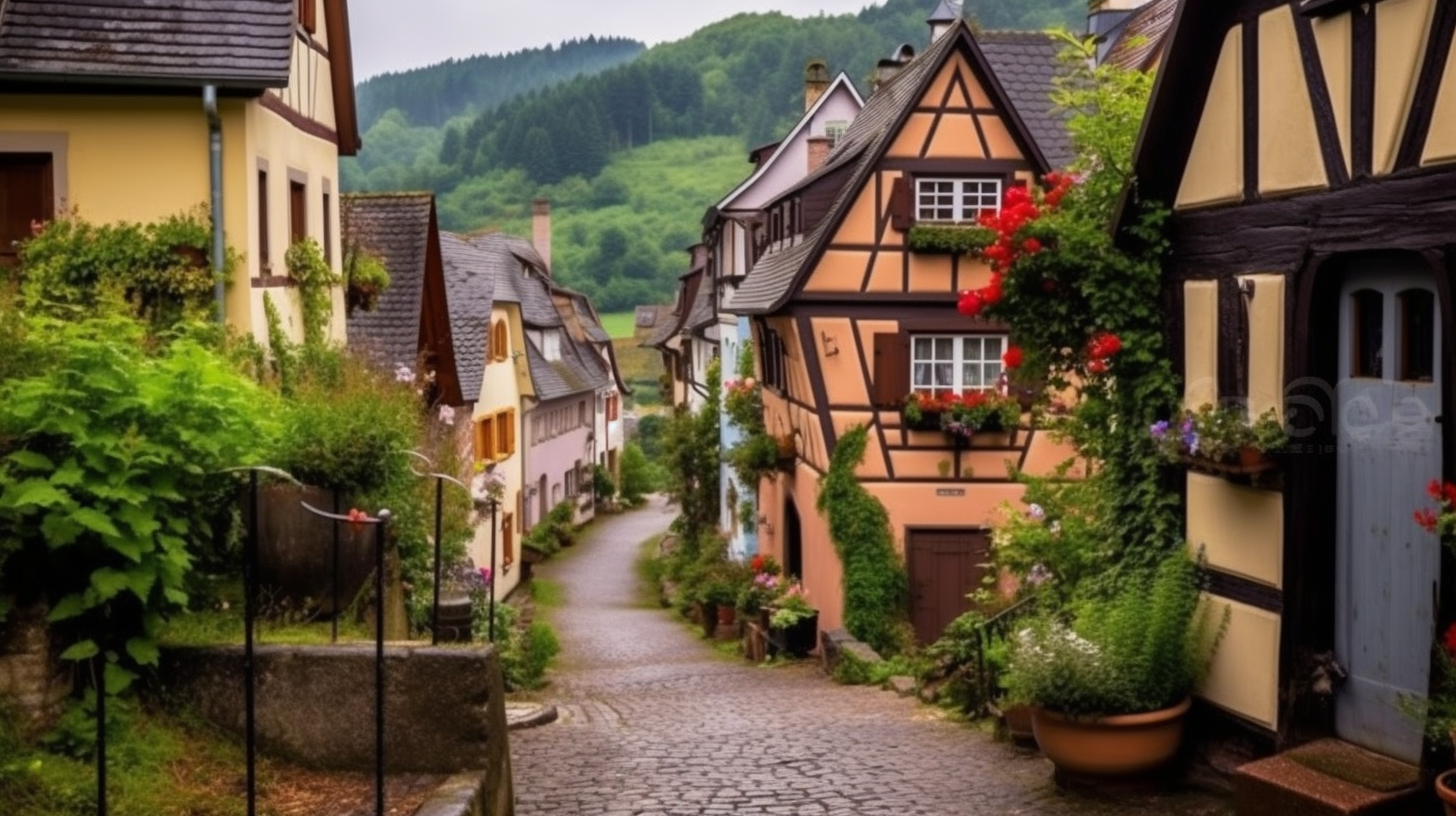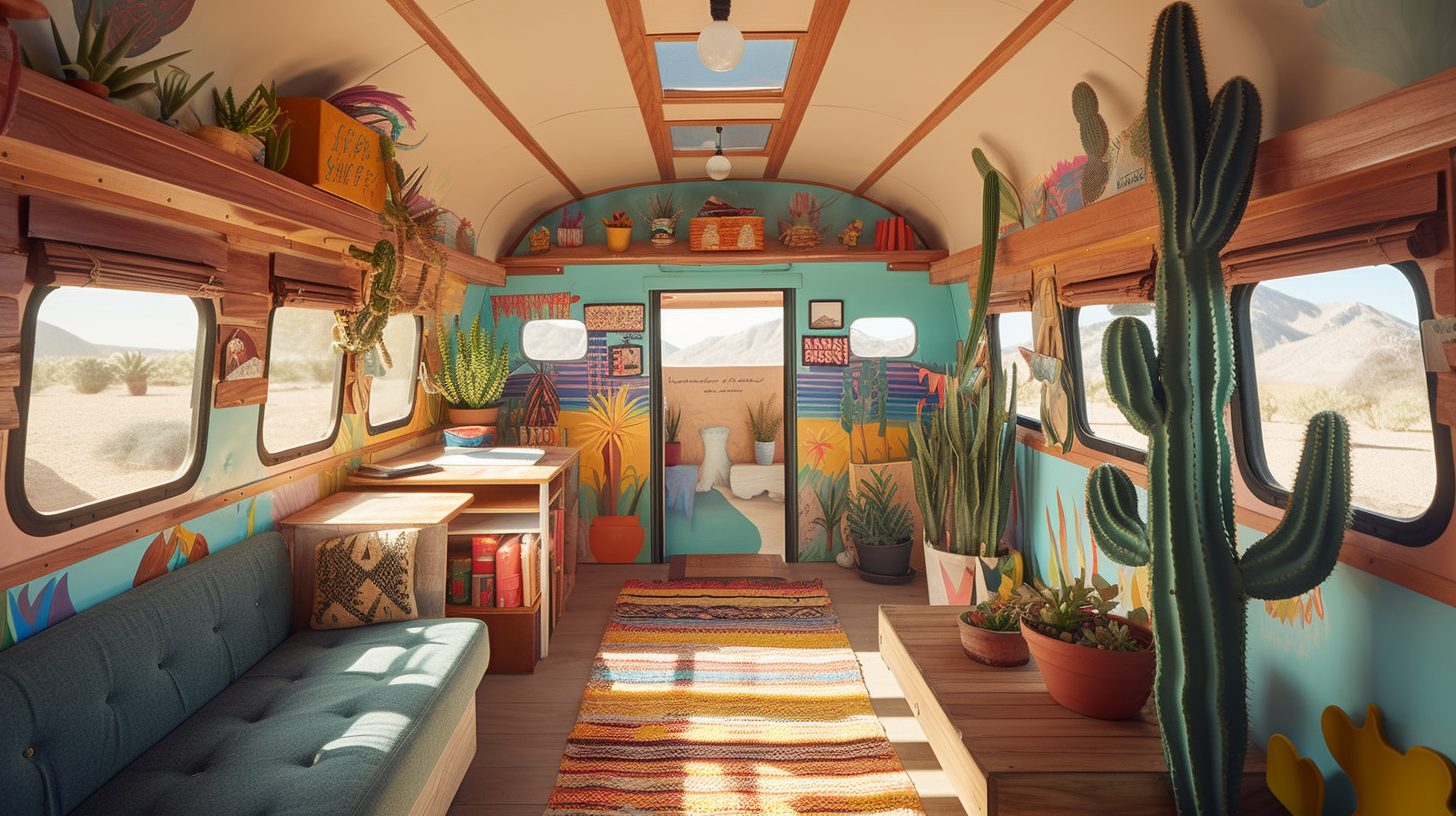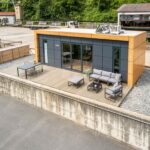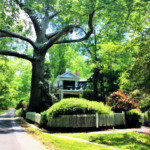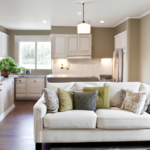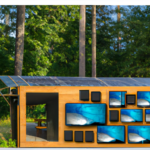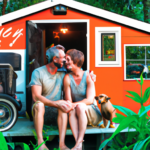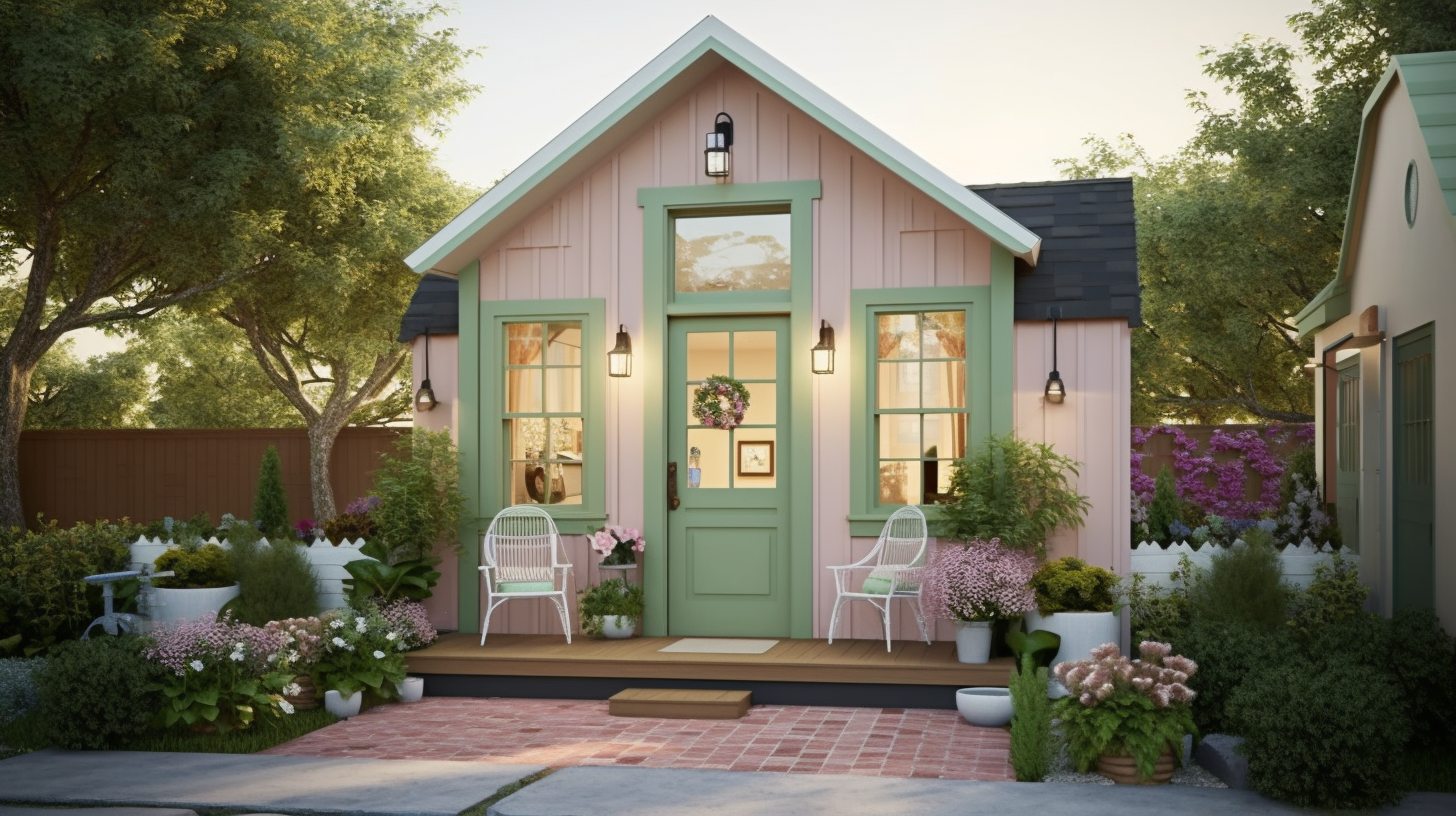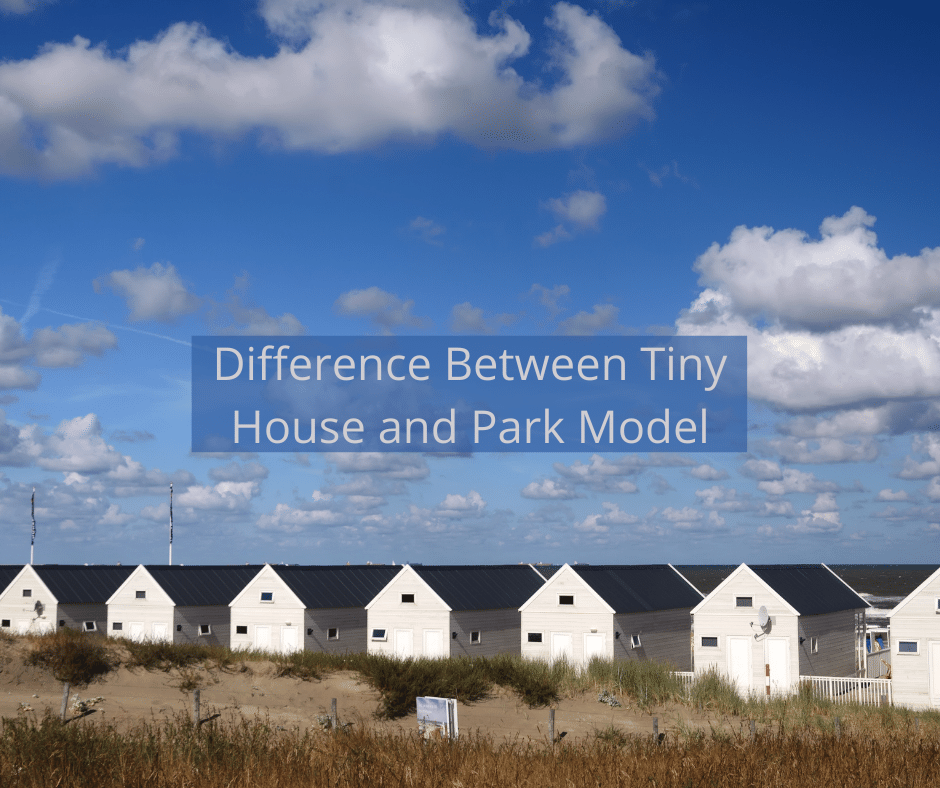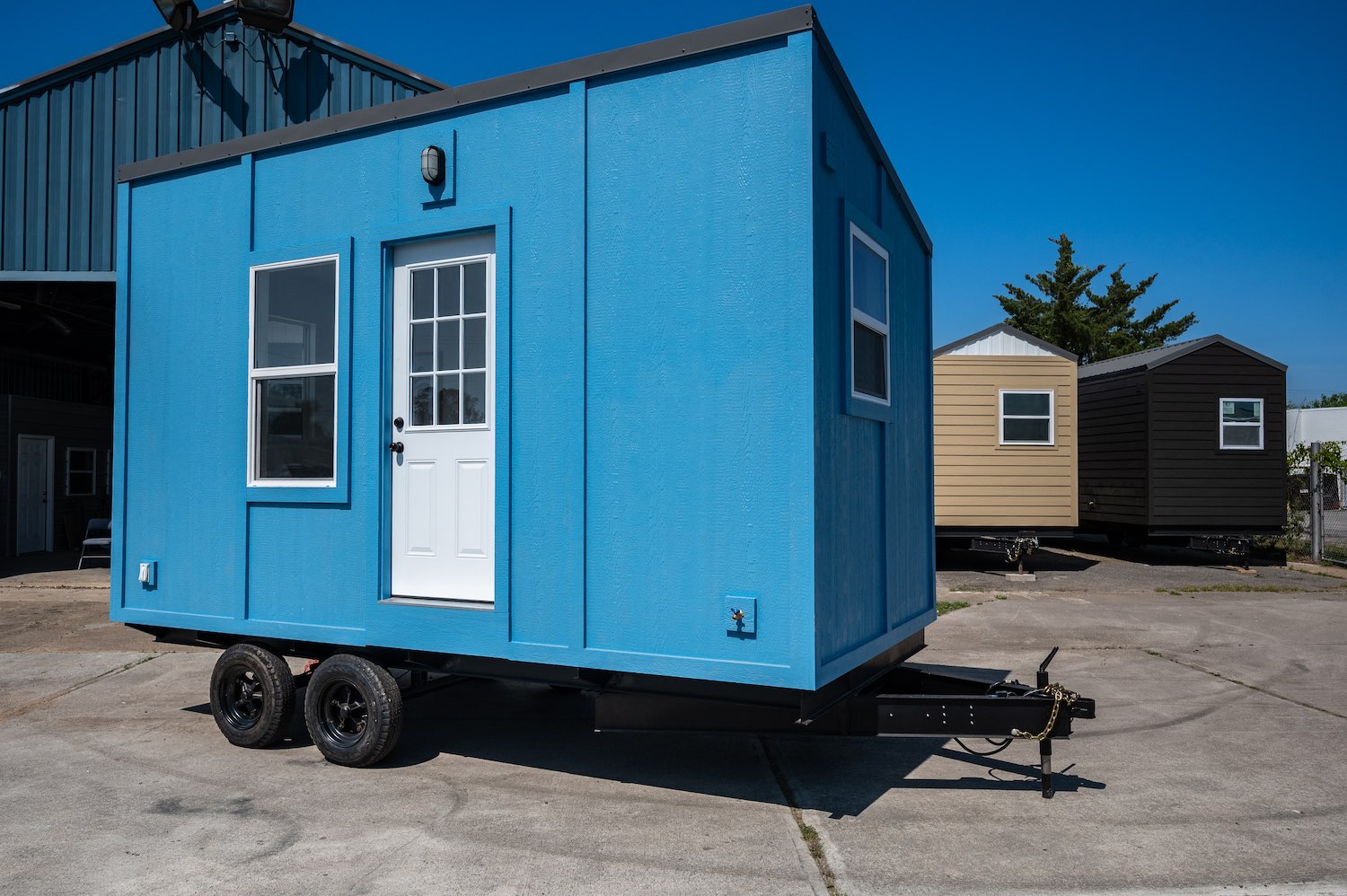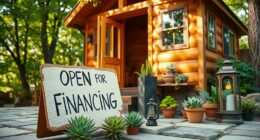German Woman’s Permitted Tiny House In Quaint Village
In the quaint village of Hopferbach, Claudia, a German resident, has found an innovative and cost-effective housing solution: a compact home. With approval from the town council and mayor, Claudia’s tiny house, which spans 200 square feet, showcases a steep, red roof that matches the local architectural style. She purchased her home for $58,000 from German builder Berghaus, and the house offers a comfortable living space complete with wall-mounted infrared heating panels.
Claudia’s living situation has been varied, having lived in a van in Australia and later in a large home and a shared apartment. However, with a simple living in mind, Claudia has avoided committing to paying off a large house for decades.
The community has embraced her tiny house, with the landowners even reserving the parking spot for their young grandson’s future home.
Claudia’s story inspires those seeking affordable and creative housing solutions, demonstrating the possibilities of living comfortably in a small space while maintaining a sense of community.
Key Takeaways
- Claudia’s tiny house in Hopferbach, Germany is a testament to the fact that one can live comfortably and affordably in a smaller space while also prioritizing sustainability.
- The approval process for Claudia’s tiny house was not without its challenges, particularly regarding the roof design, but the town council prioritized community integration and made sure that the tiny house would blend in with the surrounding neighborhood.
- Claudia’s lifestyle values simplicity and sustainability, as evidenced by her previous living situations and future plans for the tiny house lot, and the tiny house features a cost-effective and energy-efficient heating system.
- The financial benefits of living in a tiny house were important to Claudia, allowing her to save on housing costs and channel her resources towards other important areas of her life.
Location and Approval
Claudia’s tiny house, located in the quaint village of Hopferbach in southern Germany, was approved by the town council and mayor with the condition that the roof slope matches that of the other houses in town. Building regulations in Germany require strict adherence to construction standards, and Claudia’s tiny house met all necessary requirements.
The town council also prioritized community integration, making sure that Claudia’s tiny house would blend in with the surrounding neighborhood. The approval process for Claudia’s tiny house was not without its challenges, particularly regarding the roof design. However, Claudia’s willingness to work with the town council and accommodate their requests allowed her to successfully integrate her tiny house into the community.
Claudia’s tiny house serves as an example of how tiny houses can be a viable option for affordable housing, as long as they meet the necessary building regulations and are integrated into the surrounding community.
Lot Rental and Tiny House Details
The lot rental for the small dwelling includes water and sewer, and the utilities were paid for by the landowners. Claudia pays €300/month for her tiny house lot, which is located in Hopferbach, a quaint village in southern Germany. The landowners also plan to have a second tiny house on wheels on the same lot in the future.
The tiny house is approximately 200 square feet and was purchased for $58,000 from German builder Berghaus. It features wall-mounted infrared heating panels in the main area and bathroom, providing a cost-effective and energy-efficient heating system. With the approval of the mayor and town council, Claudia’s tiny house was required to have a sloped, red roof to match all other houses in town. Despite the small size, the tiny house has a comfortable living space with room for a spacious sofa and table.
Living Situation and Future Plans
Simplicity and sustainability seem to be key values in Claudia’s lifestyle, as evidenced by her previous living situations and future plans for the tiny house lot.
Having previously lived in a van for three years in Australia and later in a large home with her boyfriend, Claudia prefers a minimalist lifestyle in an affordable home of her own. She did not want to commit to paying off a big house for 20 or 30 years, which is why she opted for a tiny house.
Her tiny house allows her to live a frugal and sustainable lifestyle, which aligns with her values. In addition to the minimalist lifestyle, the financial benefits of living in a tiny house were also important to Claudia.
With a lot rental fee of €300/month, which includes water and sewer, she is able to save on housing costs and channel her resources towards other important areas of her life. Furthermore, the landowners reserved the tiny house parking spot for their young grandson to build a home there when he grows up, indicating Claudia’s long-term plan to continue living a sustainable and simple lifestyle.
Overall, Claudia’s tiny house is a testament to the fact that one can live comfortably and affordably in a smaller space, while also prioritizing sustainability.
Frequently Asked Questions
How did Claudia come to the decision to live in a tiny house?
The decision to live in a tiny house can stem from various factors, including a desire for a minimalist lifestyle and the benefits of downsizing. Claudia, the owner of a permitted tiny house in Germany, opted for simple living in an affordable home of her own.
Having previously lived in a van for three years in Australia and later in a large home with her boyfriend and a shared apartment with noisy roommates, she did not want to commit to paying off a big house for 20 or 30 years.
Downsizing to a tiny house not only offers financial freedom but also promotes a more sustainable and minimalist lifestyle, with less clutter and fewer possessions to manage.
What challenges did Claudia face during the process of getting her tiny house approved by the town council?
Obtaining approval for a tiny house can be a challenging process, especially when the house is located in a town with specific building regulations. Claudia faced challenges during the approval process for her tiny house, which required approval from the mayor and town council.
The process demanded a sloped, red roof to match all other houses in town, and compliance with other building codes. However, Claudia successfully navigated the process and obtained approval for her tiny house.
Ultimately, the town council recognized the benefits of Claudia’s tiny home and allowed her to reside in it, thus proving that with perseverance, it is possible to overcome challenges faced during the approval process.
Does Claudia have any plans to personalize or modify her tiny house in the future?
Personalization plans and interior design ideas for Claudia’s tiny house have not been explicitly discussed in the given information. However, it is possible that Claudia may have plans to modify or personalize her tiny house in the future.
As a tiny house owner, she may want to make the most of the limited space by adding functional and aesthetic elements that reflect her personality and needs. For example, she may choose to add storage solutions, decorative elements, or incorporate eco-friendly features.
It is also possible that Claudia is content with the current design and does not see the need for any modification. Ultimately, without further information from Claudia, it is difficult to predict her personalization plans or interior design ideas.
How does Claudia manage to live in such a small space without feeling cramped or restricted?
Maximizing space in a small living area can be a challenging task, but Claudia has implemented various organization tips to make her tiny house feel more spacious and comfortable.
One approach she has taken is to utilize multifunctional furniture, such as a sofa that doubles as a bed and storage space underneath. She has also installed shelving and cabinets that reach up to the ceiling to maximize vertical storage space.
Additionally, she keeps her belongings organized and decluttered, regularly evaluating what she needs and what she can do without.
Claudia’s ability to make the most of her small living area shows that with careful planning and organization, one can successfully live in a tiny house without feeling cramped or restricted.
What advice would Claudia give to someone who is considering downsizing to a tiny house?
If someone is considering downsizing to a tiny house, Claudia might offer advice on the benefits of downsizing and tips for organizing small spaces.
Benefits of downsizing include lower costs for utilities, maintenance, and property taxes, as well as a simpler and more sustainable lifestyle.
To make the most of a small space, organizing is key. This involves getting rid of unnecessary possessions, maximizing storage space, and using multipurpose furniture.
It’s also important to prioritize functionality over aesthetics, and to embrace minimalism. With proper planning and organization, downsizing to a tiny house can be a rewarding and liberating experience.
Hi, I’m Emma. I’m the Editor in Chief of Tiny House 43, a blog all about tiny houses. While tree houses are often associated with childhood, they can be the perfect adult retreat. They offer a cozy space to relax and unwind, surrounded by nature. And since they’re typically built on stilts or raised platforms, they offer stunning views that traditional homes simply can’t match. If you’re looking for a unique and romantic getaway, a tree house tiny house might just be the perfect option.
